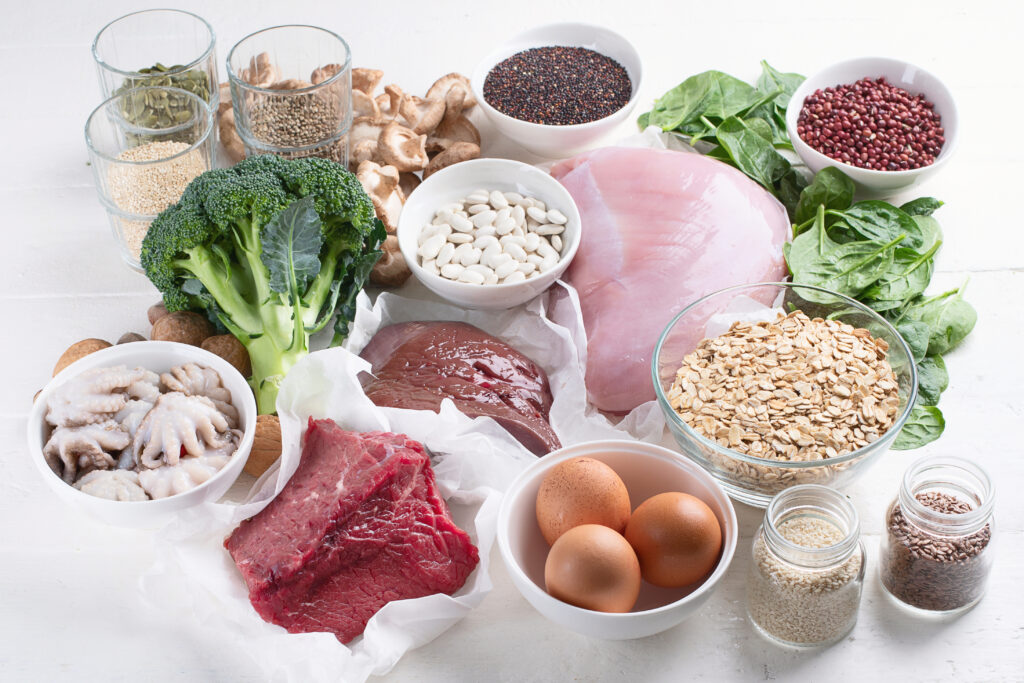Are you taking iron enriched foods? Probably, your daily diet doesn’t include foods that rich in iron. It’s not a good practice of self care.
Our body requires the highest iron foods for physical and mental wellness. It is an essential nutrient the body needs to function properly. From producing hemoglobin in red blood cells to carrying oxygen throughout the body, iron helps the body to perform rightly.
While our body can’t function systematically without iron, it can’t produce it. The only way to fulfill the requirement of this nutritional powerhouse is to take food that contains iron.
Importance of iron in our body:
As said above, iron is an essential nutrient that helps the body function smoothly. Therefore, we must take foods that rich in iron to prevent iron deficiency and protect the body from infections.
Here, it is imperative to take foods with iron in the right amount. Too little of it can develop iron deficiency, and too much of it can cause iron poisoning. Pregnant women and young children are at a higher risk of developing nutritional diseases caused due to iron deficiency.
Let’s see how iron deficiency can hamper the body’s functions:
- Iron deficiency anemia is one of the most common health issues caused due to taking insufficient food for low iron.
- If we don’t consume foods with iron, our body will lack the red blood cells required to transport oxygen from the lungs to the other parts of the body. It may lead to the symptoms like feeling weak, exhausted, irritated, and short of breath.
- Iron is an indispensable nutrient for brain development. It also promotes the production of hormones and many other cells in the body.
- Menstruating and pregnant women who don’t take iron enriched foods have a higher risk of developing iron deficiency Anemia.
- Iron is an essential nutrient required for smooth body functioning.
How much iron we can have every day?
The National Institutes of Health (NIH) cautions taking the right amount of iron every day, not exceeding more than 45 grams in teenagers and adults. Children below 13 age can take 40 mg of iron every day.
Here’s a list of how much iron we need daily as per our age groups:
- Women below 50 age: 18 milligrams (mg)
- Women above 51 age: 8 mg
- Pregnant Women: 27 mg
- Men above 19 age: 8 mg
- Children and Infants: 7 to 16 mg as per the age.
3-4 grams is a standard level of iron that one can have in the body. However, people with hemochromatosis (a genetic disorder) need excess iron absorption; it can be more than 20g.
Consult your doctor if you are still unsure about food for low iron and foods that are rich in iron for your daily iron intake.
Here is the iron rich foods list that can help you incorporate enough of this mineral into your daily diet.
Iron Rich Veg Foods:
There are two types of iron heme iron and non-heme iron. Iron rich foods veg such as nuts, seeds, legumes (beans), grains, bread, tofu, cereal, spinach, and potatoes are the main source of getting non-heme iron.
-
Legumes:
Lentils, peas, chickpeas, beans, and soybeans are the most common types of legumes. They are a great source of iron rich vegetarian foods.
For instance, 1 cup of cooked lentils contains 6.6 mg of iron.
-
Tofu:
Tofu is a soy-based iron rich vegetarian food that is a great source of iron, magnesium, calcium, and selenium.
A half-cup of tofu contains 3.4 mg of iron.
-
Spinach:
Spinach is non-heme iron food that provides several health benefits like protecting eye diseases, decreasing inflammation, lowering the risk of cancer, and so on.
Around 100 grams of raw spinach provides 2.7 mg of iron.
-
Pumpkin Seeds:
Pumpkin seeds are not only the highest iron foods but also tasty snacks. They are also among the high source of Vitamin K, manganese, zinc, and magnesium. These portable snack seeds help reduce the risk of diabetes, depression, and insulin resistance.
About 28 grams of pumpkin seeds contain 2.5 mg of iron.
-
Broccoli:
Broccoli is one of the most nutritious foods that are rich in iron. What’s more? This green vegetable is also a good source of Vitamin C, K, and fiber, which helps the body absorb iron better.
One cup of cooked broccoli provides 1 mg of iron.
-
Quinoa:
Quinoa is a highly beneficial grain, rich in iron, protein, copper, manganese, folate, magnesium, and many other nutrients. Since quinoa is a gluten-free non-hem iron, it is also a good choice for people with gluten intolerance.
One cup of quinoa contains 2.8 mg of iron.
Iron-rich non-veg food:
Iron-rich non-veg foods are a good source of heme iron, which our body can absorb more quickly than the non-heme iron found in iron rich vegetarian foods.
-
Shellfish:
Shellfish is one of the best foods for iron. While all shellfish are a good source of iron, clams, mussels, and oysters are the better choices.
For instance, 100-gram of clams contain 3 mg of iron.
-
Organ Meat:
Organ meats like liver, kidney, heart, and brain are the incredibly high source of iron. They are also rich in Vitamin B, protein, selenium, and copper.
About 100 grams of beef liver provides 6.5 mg of iron.
-
Red Meat:
Red meat is one of the most nutritious and delicious foods with iron. What’s more? Red meat is a good source of zinc, selenium, protein, and Vitamin B groups. In fact, it is one of the most significant sources of heme iron, essential for people who have a higher risk of developing iron-deficiency anemia.
About 100 grams of red meat contains 2.7 mg of iron.
-
Fish:
Fish is an easily available source of heme iron and omega-3 fatty acids. While all kinds of fish foods are high in iron, certain varieties like tuna, sardines, haddock, and mackerel are the most preferred choices for people who are more prone to anemia.
People who include fish foods in their daily diets have been shown to improve the immune system, promote brain health, and support healthy development.
About 85-gram of canned tuna provides 1.4 mg of iron.
Conclusion:
Iron is an essential nutrient that we must consume daily to protect the body from infections and prevent iron deficiency. Interestingly, iron deficiency occurs when our daily iron intake is too less than the amount we lose daily. Typically, we can fulfill this requirement by taking foods with iron. But sometimes, taking iron supplements becomes essential, especially when our health care provider suspects our body needs it.




Peculiar article, totally what I was looking for.